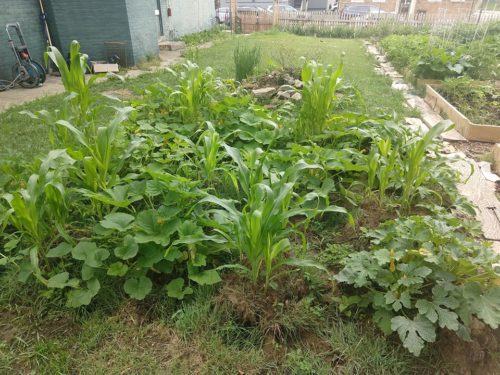In today’s How-to-Grow Cannabis article, Growers Network talks about nutrients and their purpose in your grow.

Good morning/afternoon/evening/witching hour!
Today we’re talking about nutrients. In the 100s level of our How-to-Grow Cannabis series, we focused on growing in soil, particularly potting soil. This soil often comes with enough nutrients to last the entire growing period. However, as we move into the 200s level of growing, we need to talk about how to replenish your soil’s nutrition or add nutrients to your inert medium.
So let’s get started.

What is all this stuff?
If you browse any online supplier of growing equipment, you’ll notice there’s a ton of different “nutrient” products, and it’s not obvious what they’re all for. You may get lost as you venture into the dark pits of e-commerce and try to suss out what you’ll need. I’m here to make the experience less harrowing, and hopefully explain what all this stuff is.
Macronutrients
Sometimes called “base nutrients,” your fundamental nutrients for plant growth are Nitrogen, Phosphorus, and Potassium, or NPK for short (NPK representing their symbols on the atomic chart). These three nutrients are called “macronutrients” because they are required in large amounts for plants to grow. A deficiency in any of these three nutrients will have serious consequences for your plants.
The marketing for these items can be somewhat confusing, and you’ll see different adjectives to describe these basic nutrients. The important thing to look for is three numbers separated by a dash, such as “2-2-3” or “10-10-10”. The first number represents the concentration of nitrogen, the second number the concentration of phosphorus, and the third number the concentration of potassium.
Micronutrients
As a certain ancient text says, man cannot live on bread alone. The same is true for plants. While NPK accounts for a majority of the nutritional needs for plants, there are many micronutrients that are required to prevent your plants’ horrific demise. I’ll compile a short list here, but the list is by no means comprehensive:
- Iron
- Sulfur
- Calcium
- Magnesium
- Manganese
- Zinc
- Molybdenum
- Copper
- Boron
Of this group, calcium, magnesium, and iron need to be in higher concentrations than the rest. If you’re growing with water straight from the tap, you generally won’t need to add any calcium to your mix, because tap water contains fairly high levels of it.
I just want something simple.
While no single plant or grow setup has a “one-size-fits-all” nutrient regimen, the closest you’ll get to an all-in-one nutrient package is called a Hoagland Solution, named after a scientist who helped develop hydroponics in the modern era. The Hoagland solution contains pretty much all the nutrients your plant could want, but the ratios may need to be adjusted for your unique case.
Stuff you really don’t want in your nutrients
Plants, like many other living organisms, pick up stuff from their environment. While generally plants will pick up most of the good stuff in their environment, they can also pick up some pretty bad stuff. In the Cannabis industry, the bad stuff falls into either of two categories: Pesticides or “Heavy” metals.
Pesticides
A savvy business person might want to combine the pest control and fertilization into one to make the whole process quicker and easier. But this is a really bad idea for Cannabis.
Why? Well, simply put, pesticides provided through the soil like nutrients end up sticking around inside the plant. These are collectively called systemic pesticides, and give the plant a massive boost when fighting off pests. Systemic pesticides are most commonly used in ornamental plants which are not grown for human consumption.
The problem is that some of these systemic pesticides may also end up in the final product -- which people will smoke. If you think eating or drinking a pesticide is bad, smoking it is worse, and can cause some nasty reactions.
So if you’re buying nutrients for growing cannabis, please don’t buy any nutrients with pesticides in them.
“Heavy” Metals
The other thing that plants can pick up are the so-called “Heavy” metals.

These metals are toxic to humans, and are called “heavy” because one of the most common toxic metals is lead, the heaviest non-radioactive metal. However, not all of the “Heavy” metals are actually all that heavy. They’re just toxic. Here are some toxic metals you do not want in your plant, because they will end up in the final product:
- Lead
- Mercury
- Chromium
- Arsenic
- Cadmium
- Beryllium
- Cobalt
- Nickel
It is not possible to completely eliminate these metals from any nutrient or soil regimen, so governmental organizations such as the FDA establish limits on how much can be present in the final product. Always read the MSDS for any nutrient you buy, and try to find nutrients or additives that do not have any of these metals listed.
Synthetics? Organics? Amendments? Teas? Additives? pH? AHHHH!
In our next article, we’ll explain the differences for these products more in-depth. Suffice it to say that all of these different products have their place in your grow, depending on your needs and your style of growing.
How do I use this stuff?
There are several different ways to apply nutrients to your product, depending on how your grow has been set up. The short and simple answer is that most nutrients need to end up in your plant’s root zone, so your method of application will depend on the best way to get to your plant’s roots.
Soil and some mediums: Fertilization
Since soil is the simplest, we’ll start with it. Soil fertilization is as simple as mixing the nutrients in water, putting it in a watering can or sprayer, and watering the plants. With some nutrients, you can also place them on the soil and water it, but we don’t recommend this. Mixing the nutrients beforehand ensures more uniform distribution for your plants.
All Mediums: Fertigation
Fertigation (a portmanteau of “fertilization” and “irrigation”) is a process by which you apply fertilizer or nutrients through the water lines you use to feed your plants. This method works for all mediums, and is most commonly used at the commercial level. That said, sometimes this method can clog up the irrigation lines, so make sure you know how to fix a clog before you start doing this.
Hydroponics: Put the nutrients in your reservoir
Hydroponic methods such as ebb-and-flow or deep water culture have large reservoirs of water that feed the plants. You can pre-mix your desired nutrients in a bucket or bag outside of the tank and pour the nutrients into the reservoir. If all goes well, the nutrients should all dissolve or suspend in the tank evenly. If you see white precipitates start forming (and dropping out as a white powder in the water), your nutrients are conflicting with each other, or you have a pH imbalance. You’ll need to address either (or both) problems.
What if I don’t want to use nutrient products?
Some people find the idea of shipping nutrients across the country distasteful and/or environmentally unfriendly. If you want to skip using nutrient products, there are some methods available to
Manure / Compost (Soil-only)
If you prefer to grow with organic or permaculture principles in mind, a great method for providing nutrients for your plants is with animal manure, or compost from plant/food waste. You simply need to gather up the materials you want to include in your fertilization regimen and store them in some kind of self-contained bin.
It will take time for microbes to break down the organic compounds contained in the waste, so this method will not help you if you need nutrients NOW. You will need to give the material a few weeks to a few months to break down, with some mixing every few days to prevent the growth of fungi and nasty anaerobic bacteria.
Once the material looks sufficiently broken down, you can apply it directly to the soil and water it.
Compost Teas (All mediums)
If you want to use your compost or manure in a hydro grow, or you just want to enhance it for your soil, there’s one additional step to take: Add water and stir. There are some professional systems available for making the compost “brewing” system simpler, but at its core all it takes is a bucket and something to stir with. The professional systems will provide more even distribution of the nutrients and enhance oxygenation of the tea, which will produce more beneficial bacteria.
Either way, once you have a compost tea brewed, apply directly on top of whatever medium you’re growing in -- do not apply through your irrigation lines, or you will get some pretty awful clogging. The particulate matter in compost teas is too large to fit most irrigation equipment.
Intercropping / Crop Rotation (Soil-only)
This method only applies to soil, but you can grow several crops side-by-side to keep your soil healthy and nutrient rich. This is called “intercropping” and the most common example of intercropping is called the “Three Sisters,” or corn, beans, and squash. Certain plants, when grow side-by-side, maintain the health and nutrient quality of the soil.

Another alternative is rotating your crops. For one growing cycle, you can grow cannabis, and for the next, a nitrogen-fixing crop. You will still need to add phosphorus and potassium, but can reduce your nutrient requirements overall.
Aquaponics (Hydro-only)
This is a more advanced method that will take a lot of time and practice to get right, but you can use fish to generate fertilizer. Some hydro systems have living fish growing in their reservoir tanks, and feed these fish local plants or fish food. The fish fertilize the reservoir, and the water gets passed to the plants. The returning water is generally cleaned up and returned the fish. While this is a pretty brief explanation, implementation of this system is difficult, because fish are very sensitive to deviations in their environment.
That’s all, folks!
This article was a crash course in plant nutrition. In the next article, we’ll dive into some more specifics about things such as synthetics, organics, amendments, and more. If you think we’re missing anything, please let us know in the survey below, or on the forum.
10 Best Gift Ideas for Cannabis Connoisseurs and Growing Aficionados (2022)
December 7, 2022Developing and Optimizing a Cannabis Cultivation System
December 14, 2021Dealing with Insomnia: How Can CBD Help?
December 10, 2020Your Guide to Sleep and CBD
December 7, 2020
Do you want to receive the next Grower's Spotlight as soon as it's available? Sign up below!

Do you have any questions or comments?

About the Author
Hunter Wilson is a community builder with Growers Network. He graduated from the University of Arizona in 2011 with a Masters in Teaching and in 2007 with a Bachelors in Biology.